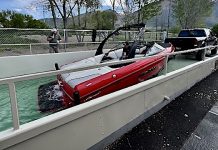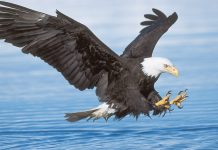RANDOLPH, Utah, Jan. 24, 2023 (Gephardt Daily) — With normal forage completely covered with snow, wildlife officials have begun emergency feeding of deer in 11 locations in Rich County and one in Summit County.
“Deep snow has made it difficult for deer to find food in parts of Rich and Summit counties, and recent health checks of big game in those areas has shown below average body fat conditions for the deer,” reads a Monday post on social media. As a result, the Utah Division of Wildlife Resources is taking a two-pronged approach to help the deer out in those areas:
Biologists have implemented emergency deer feeding. Specially designed pellets will be distributed in specific areas. The pellets match the unique nutritional needs and digestive system of deer.
Conservation officers are conducting additional patrols to help reduce the repeated stress that people may be putting on deer in those areas.
DWR biologists and volunteers — mostly landowners and hunters from local conservation groups — started feeding deer at the 12 locations on Friday. according to the DWR.
“In the areas where we’re feeding, the vegetation that deer eat in the winter is completely covered by snow,” DWR Northern Region Wildlife Manager Jim Christensen said.
Biologists are feeding the deer specially formulated pellets that meet the nutritional needs of deer when natural forage becomes temporarily unavailable. The pellets are the only item biologists will feed the deer. Alfalfa, grass hay or other products will not be used.

“Deer will eat hay, but if that is their only source of feed during the winter they can have a very difficult time digesting it,” Christensen said. “We often find dead deer with stomachs filled with hay.
“We appreciate people wanting to help the deer, but we strongly discourage people from feeding hay or other things to deer. These are special circumstances that follow Division policies, involve trained professionals and utilize specialized feed.
“We still recommend that the public doesn’t feed wildlife, due to safety concerns, among other things.”
DWR biologists will continue monitoring winter conditions and the condition of the deer across Utah and may feed deer in additional locations, if the need arises.
However, deer feeding will not happen in areas where chronic wasting disease has been found.
“Chronic wasting disease is fatal to deer that contract it, and it’s highly contagious,” DWR Big Game Coordinator Dax Mangus said. “Congregating deer at a feeding location increases the chance that a deer with chronic wasting disease will pass it on to other deer.
“The short-term benefits of feeding do not outweigh the negative long-term consequences of spreading chronic wasting disease in a highly congregated deer population.”







